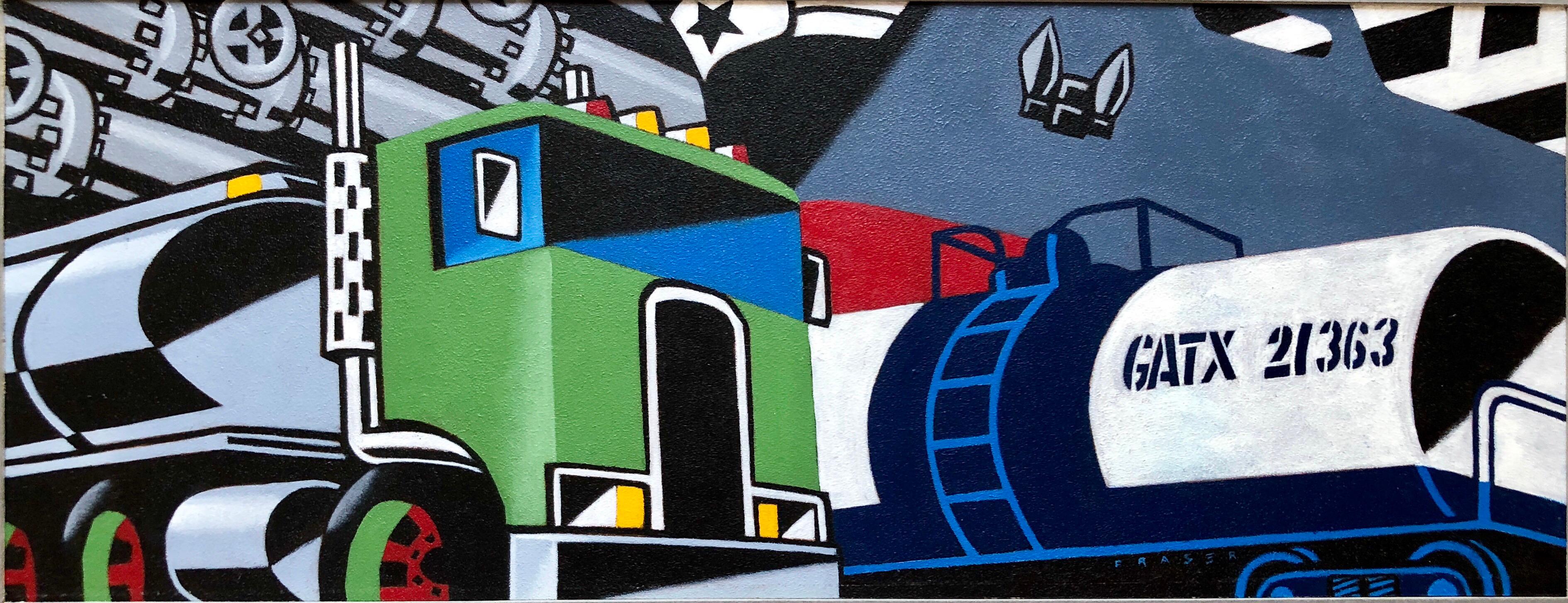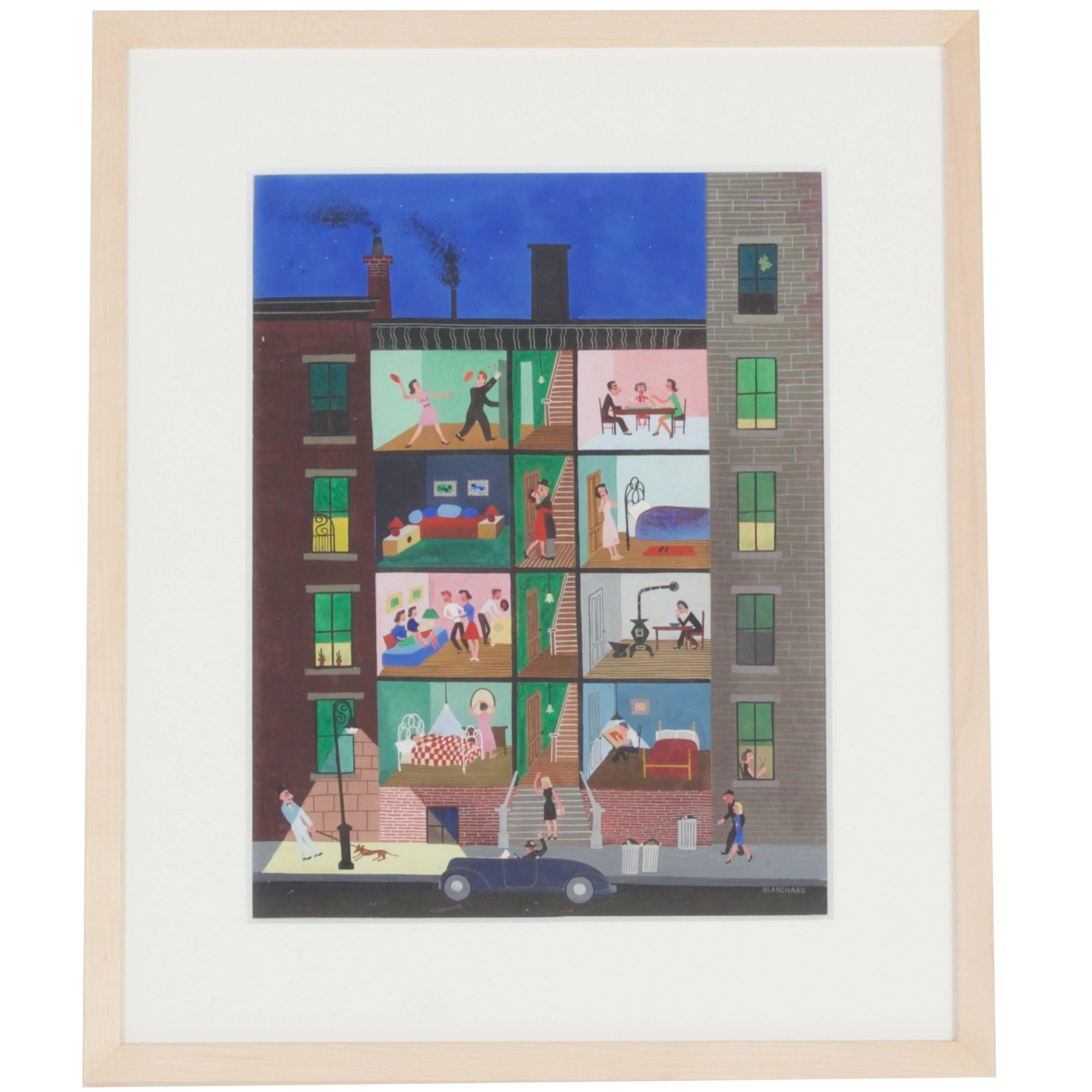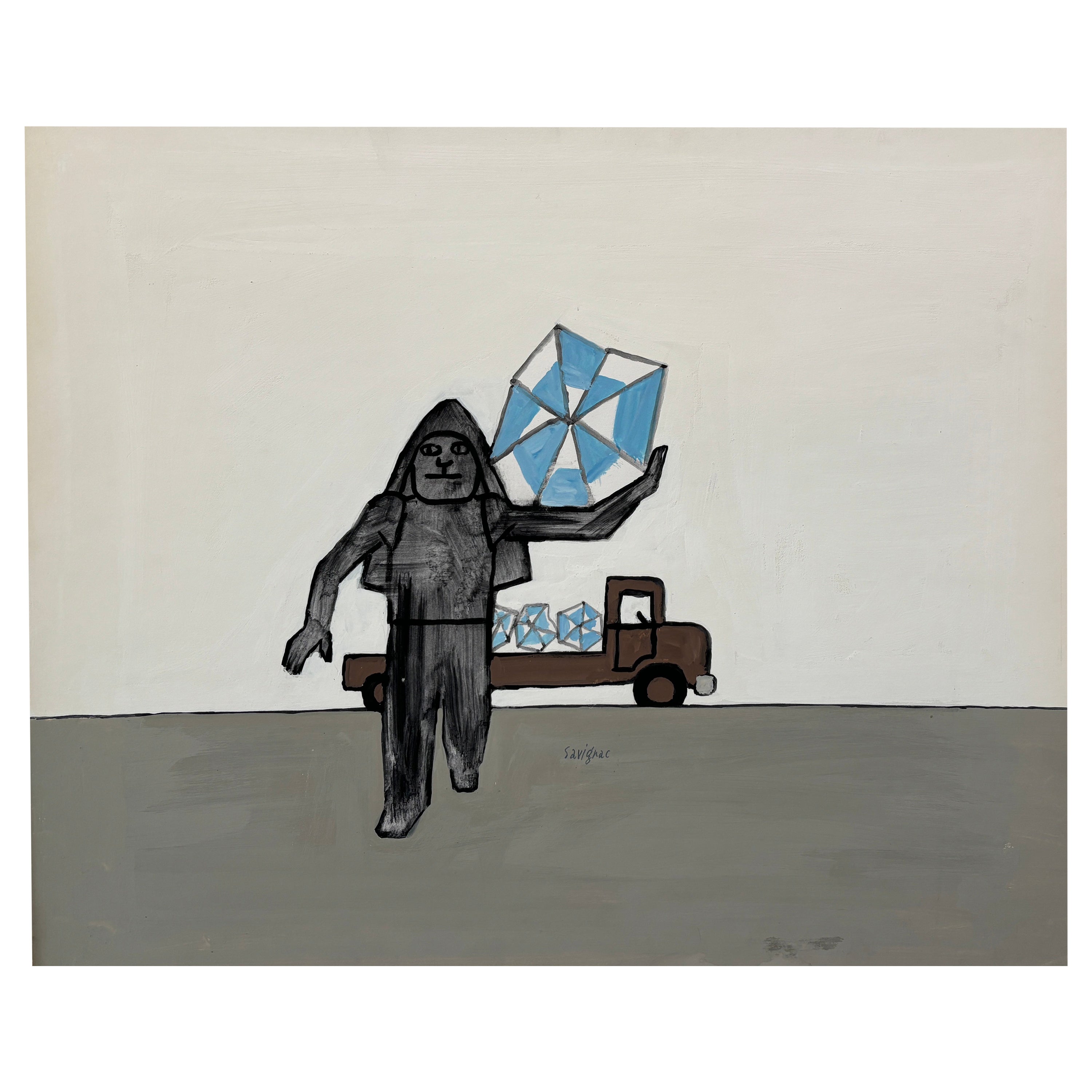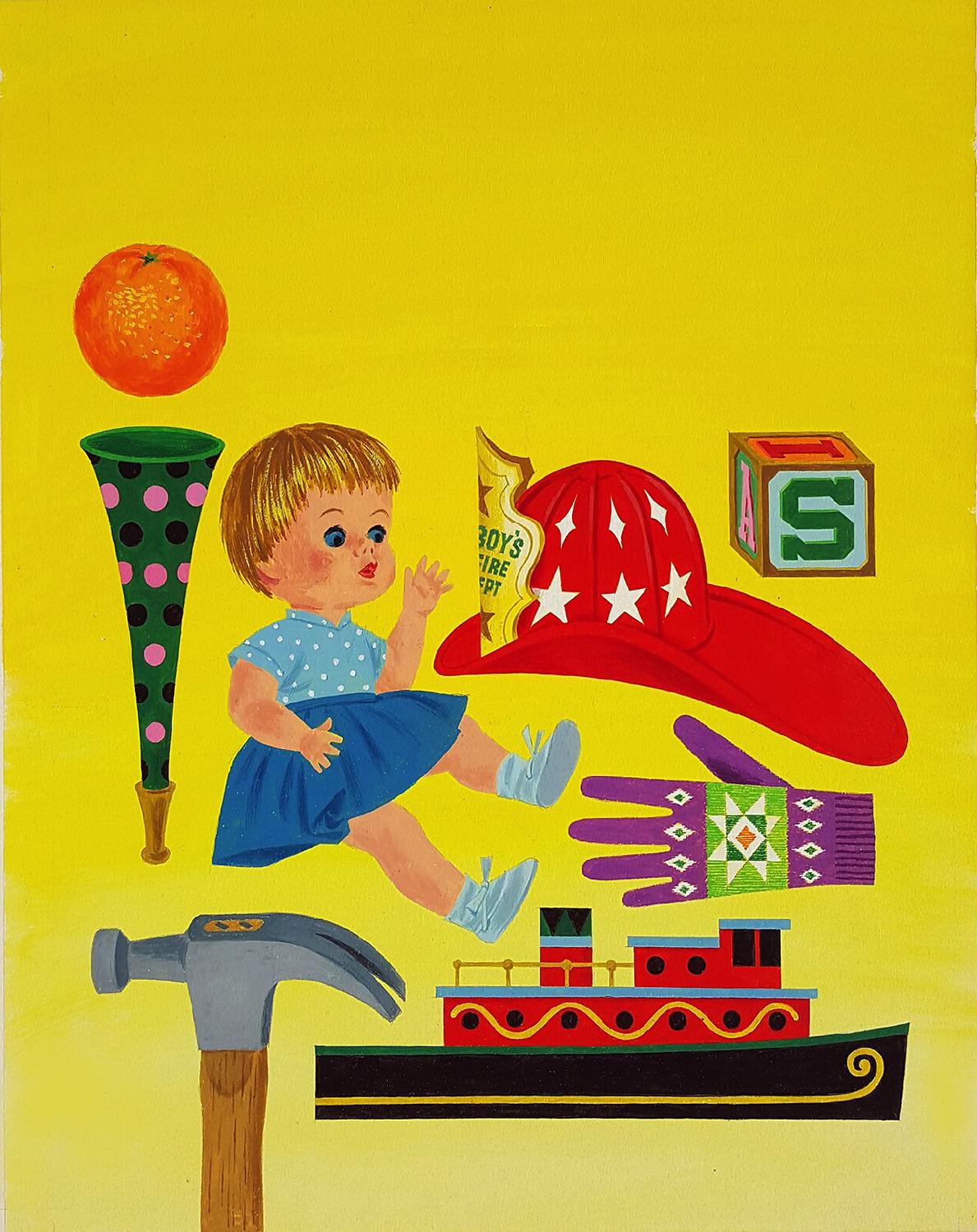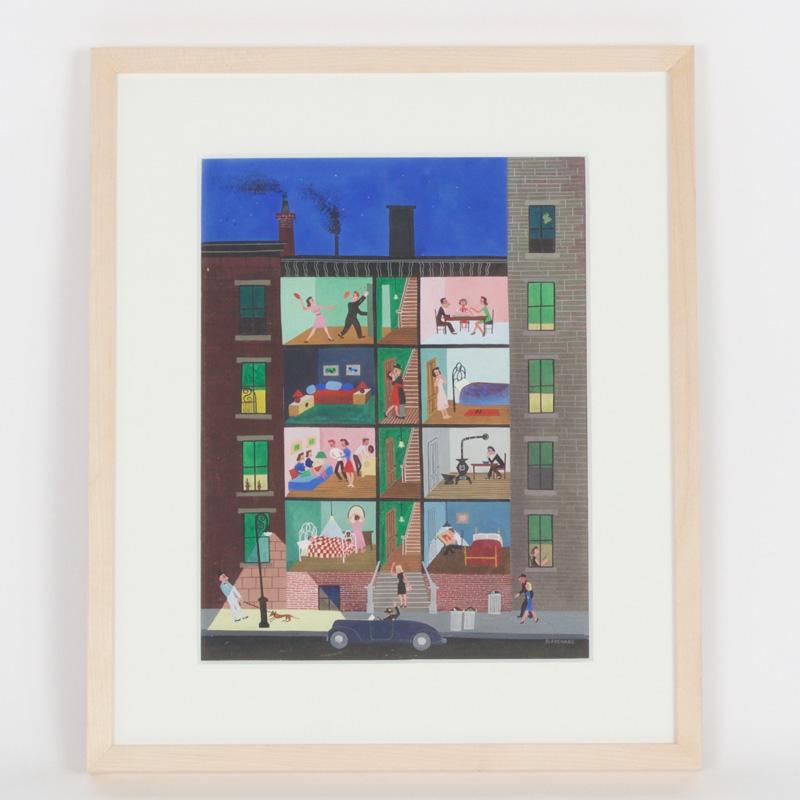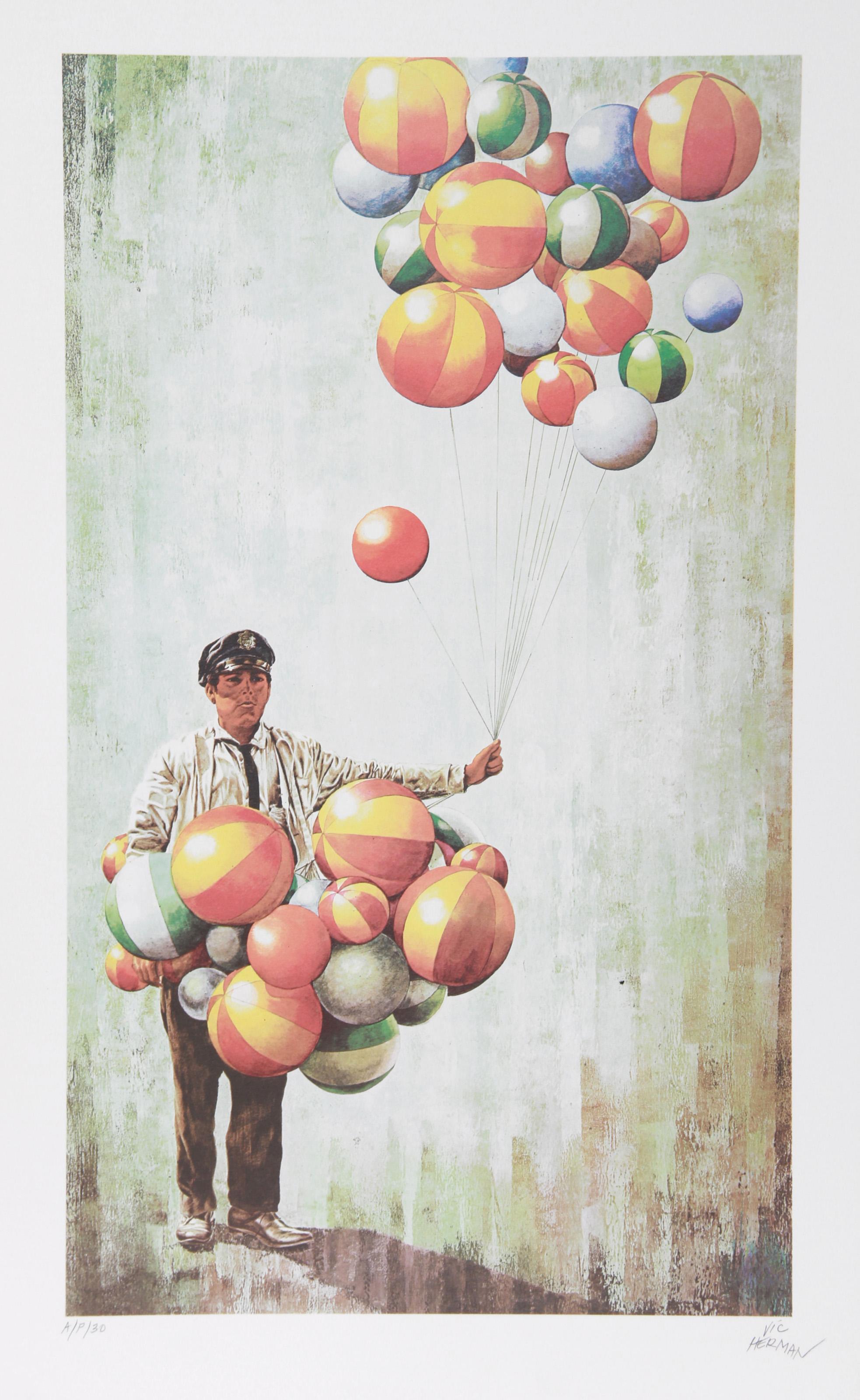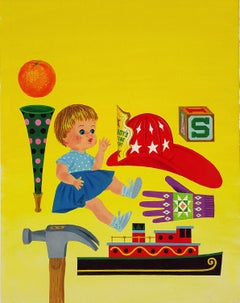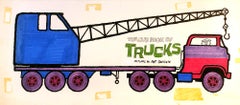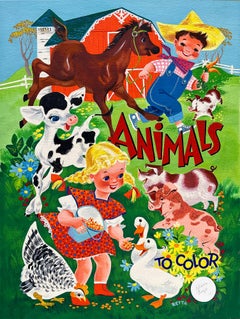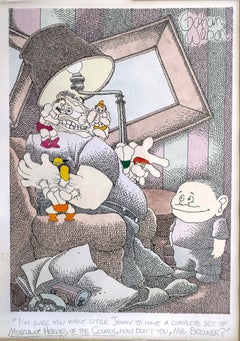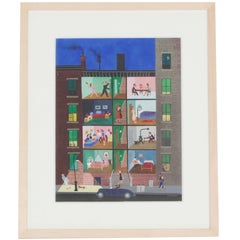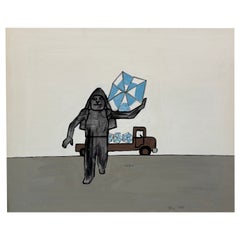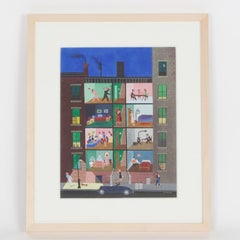Items Similar to Heavy Hauler - Mid-Century Illustration - Children's Books
Want more images or videos?
Request additional images or videos from the seller
1 of 10
Art SeidenHeavy Hauler - Mid-Century Illustration - Children's Books1950s
1950s
$4,500
£3,401.44
€3,908.86
CA$6,266.22
A$6,970.92
CHF 3,654.24
MX$85,182.89
NOK 46,532.20
SEK 43,803.63
DKK 29,178.17
Shipping
Retrieving quote...The 1stDibs Promise:
Authenticity Guarantee,
Money-Back Guarantee,
24-Hour Cancellation
About the Item
Art Seiden was born in Brooklyn, NY in 1923. He received a BA at Queens College and studied for eight years (!) at the Art Students League. Mario Cooper was among his instructors. Upon entering the illustration field he did corporate and advertising work for some of the largest companies in America: Phillip Morris, Hoffmann-LaRoche, General Motors and Hearst Publications were some of his clients.
The present work is unframed and unsigned
But his distincive style and best and longest association would have to be in the realm of children's book illustration, where he cut his teeth illustrating "Three Mice and a Rat" by Margaret Wise Brown and Jean H. Berg in 1950. Seiden illustrated over 300 books and was both author and artist of at least 22 children's books for virtually every major publisher in America beginning rather appropriately with "My ABC Book" for Wonder Books in 1953. Seiden spent the following decades working with an alphabet of authors and coming back around to Margaret Wise Brown with one final book, "The Train to Timbuctoo" for Golden Books in 1999.
Seiden worked mainly in transparent watercolours and gouache and is a member of the American Watercolour Society and The Society of Illustrators, among others. His work is represented by the Kendra Krienke Gallery in New York City and he lived in Woodmere, NY.
Special thanks to Terri Goldich, Curator of Archives & Special Collections at the University of Connecticut, for assistance with this information. The Art Seiden Papers contain a comprehensive listing of titles Seiden worked on.
- Creator:Art Seiden (1923 - 2004, American)
- Creation Year:1950s
- Dimensions:Height: 7.75 in (19.69 cm)Width: 18 in (45.72 cm)Depth: 1 in (2.54 cm)
- Medium:
- Movement & Style:
- Period:
- Condition:
- Gallery Location:Miami, FL
- Reference Number:1stDibs: LU385311518892

About the Seller
4.9
Gold Seller
Premium sellers maintaining a 4.3+ rating and 24-hour response times
Established in 2005
1stDibs seller since 2016
115 sales on 1stDibs
Typical response time: 1 hour
- ShippingRetrieving quote...Shipping from: Miami, FL
- Return Policy
Authenticity Guarantee
In the unlikely event there’s an issue with an item’s authenticity, contact us within 1 year for a full refund. DetailsMoney-Back Guarantee
If your item is not as described, is damaged in transit, or does not arrive, contact us within 7 days for a full refund. Details24-Hour Cancellation
You have a 24-hour grace period in which to reconsider your purchase, with no questions asked.Vetted Professional Sellers
Our world-class sellers must adhere to strict standards for service and quality, maintaining the integrity of our listings.Price-Match Guarantee
If you find that a seller listed the same item for a lower price elsewhere, we’ll match it.Trusted Global Delivery
Our best-in-class carrier network provides specialized shipping options worldwide, including custom delivery.More From This Seller
View AllThings in My House” Little Golden Book, Children's Book CoverIllustration Art
Located in Miami, FL
Joe Kaufman, writer, illustrator. Recipient Art Directors Club medal, 1948, New York Academy of Sciences Children's Science Book award, 1973, Gold award, Silver award Art Directors C...
Category
1960s Outsider Art Figurative Paintings
Materials
Gouache
The Cub Book of Trucks. Title Page
By Art Seiden
Located in Miami, FL
Art Seiden was a children's book illustrator in New York City.
Seiden was a members of The Society of Illustrators
Category
1960s Contemporary Figurative Paintings
Materials
Pen, Permanent Marker, Graphite
Horses, Chicken, Ducks, Rooster and Pigs Children's Book - Female Illustrator
Located in Miami, FL
Cover illustration for mid-century children's book publisher Merril Publishers. Signed lower right. Unframed. Retta Scott or Retta Worcester was (February 23, 1916 – August 26, 1990) was an pioneering Female Illustrator / American artist. She was the first woman to receive screen credit as an animator at the Walt Disney Animation Studios.
Scott worked on storyboards to develop scenes of Bambi, his mother, and the film’s hunting dogs, on which she spent weeks to develop them into “vicious, snarling, really mean beasts.” Male artists in the company were stunned who initially assumed that only a man could create drawings with such intensity and technical skill. Her sketches caught the eye of Disney, so when the film went into production, she was assigned to animate scenes of hunting dogs chasing Faline. She worked under the film's supervising director, David D. Hand,and was tutored by Disney animator Eric Larson. This was a significant coup for the young woman, since at the 1930s-era Disney studio, women were considered only for routine tasks: "Ink and paint art was a laborious part of the animation process, and was solely the domain of women..." Her promotion to animator was in part thanks to the success of herself and other women such as Bianca Majolie, Sylvia Holland, and Mary Blair as storyboard artists. Even after receiving a promotion to animator, she and her animations continued being under appreciated in the industry. Though the most recognized Walt Disney female artist is Mary Blair, it is Retta Scott who opened up the doors for women in the animation industry. She became the first woman to receive screen credit as an animator. By the spring of 1941, Scott was also considered a "specialist in animal sketches."
Scott helped produce Fantasia and Dumbo, as well as an adaptation of The Wind in the Willows that was later cancelled. She also made an appearance in The Reluctant Dragon...
Category
1950s Feminist Animal Paintings
Materials
Gouache
Macabre Cartoon Children's Toys Attack Father - Playboy Cartoon
Located in Miami, FL
A child looks on with glee as his "Muscular Heroes of the Cosmos" Toys transform from inanimate objects to real, actionable beings and beat up his father. Signed upper right, Gahan...
Category
1980s Outsider Art Figurative Drawings and Watercolors
Materials
Paper, Ink, Watercolor
Mid-Century Americana "Good House Keeping Magazine", 1948
By Michael Silver
Located in Miami, FL
When the Wood Grows Dry "Good House Keeping Magazine" illustration
Surreal depiction of a young mid-century girls social life Good House Keeping Magazi...
Category
1940s Academic Figurative Paintings
Materials
Gouache, Board
That's a Wrap, Playboy cartoon Illustration ,
By Dink Siegel
Located in Miami, FL
Dink Siegel (American, 1910-2003)
That's a Wrap, Playboy cartoon, August 1973
Mixed media on board
11.25 x 8.5 in.
Signed lower right
Category
1970s American Modern Figurative Drawings and Watercolors
Materials
Mixed Media
You May Also Like
Bold Graphic Illustration Pop Art Image of Large Truck, Orignal Alkyd Painting
Located in Surfside, FL
Doug Fraser Graphic design illustration artist. Doug was born in Lethbridge, Alberta, Canada. He attended the Alberta College of Art & Design in Calgary where he studied graphic design and illustration. After four years at ACAD he went to New York for graduate school, attaining a masters degree, MFA, from the School of Visual Arts. Without missing a beat, Doug became an award winning illustrator, (in a cartoon, bold comic book sort of style) having executed commissioned works for an array of international clients including The New York Times, the Washington Post, TIME, Newsweek, BusinessWeek, Wirtschafts Woche (Germany), Rolling Stone, Mother Jones, Motor Trend, NHL, IBM, and Levis.
His technique originally involved traditional media of oils on canvas and evolved over the years to incorporate digital aspects both exclusive and combined with paint. During the early 90's, he was approached by the ACAD(Alberta College of Art & Design in Calgary) to teach and accepted a part-time position. Doug has sat on several juries and spoken in numerous cities including New York and Los Angeles.
His illustration work has been exhibited in the US, England, Japan and Canada. Memberships have included the prestigious Society of Illustrators(NY) for eighteen years, the advisory panel of ICON5, the American Illustrator Partnership (founding member status), CAPIC and the Graphic Artists Guild of New York. 2004 recipient of the Alberta College of Art & Design Board of Governors Alumni Award of Excellence.
His style is similar to the graphic novel style of Art Spiegelman, Shepard Fairey, Ben Katchor or Robert Crumb in its graphic expressiveness
After a long successful career as an illustrator, the desire to create works of a different nature and purpose began to surface. Building on the technical knowledge developed professionally as a visual communicator in the graphics world for 30 years, he began to experiment once again, without the burden of client and other constraints. This freedom enabled Doug to move beyond his past and develop a body of work which is more personal in subject. This new body of paintings strongly links artistic influences with personal observations. Influences affecting structure include graphic design, abstract and figurative art. A two dimensional quality is embraced and the construction becomes as important as the subject. The subject, which is somewhat banal in tone, is derived from his own first hand experience. Exploring subject that which is usually only seen in passing, but is now observed more closely. Intense visual study precedes a process of disassembling and then reconstruction. Throughout, there's an internal dialogue between the objective and the subjective. The experiential challenge of this process has Douglas tracing the edges of where the figurative meets abstraction.
EDUCATION; Alberta College of Art & Design, Calgary, Alberta, Canada. Visual Communication Arts. School of Visual Arts, New York, New York, M.F.A. degree.
ILLUSTRATION CLIENTS; Editorial: Boston Globe, Business Week, BUZZ, Esquire, Forbes, Globe & Mail, GQ, L.A. Times, Mademoiselle, Manhattan Inc, Mother Jones, Newsweek, New York Times, New York Woman,Omni, Penthouse, FORTUNE, TIME, Washington, Self, Sports Illustrated, Texas Monthly, Washington Post, Rolling Stone Book: David R. Godine, Houghton-Mufflin, Knopf, Macmillan, Rabbit Ears Video & Book, Simon Schuster, The Progressive, Turner Publishing (CNN), BLAB!, Telstar Comic compilation Corporate: Air Canada, Allen-Bradley [a Division of Rockwell International],Citibank, Coca-Cola, Danzas (Europe), IBM, Kingston Electronics, Kohler, Levis, Lowenbrau Beer, Concept-1 Calgary, Memorex, Oakland A's Baseball Team, National Football League, National Hockey League, Nike, Northern Telecom, Nynex NY, Pfizer, RCA, Roundtree U.K., Samsung Electronics, Sony, Suzuki Motorcycles, Tamko, USF&G [financial investment group]. Graphic Novel, Comic Book: Adhouse Press, story titles; "Electric Sheep...
Category
20th Century American Modern Figurative Paintings
Materials
Alkyd, Illustration Board
Mid-Century Gouache Painting on Paper Painted for the New Yorker Magazine
By Robert Blanchard
Located in Palm Beach, FL
Here is a Mid-Century gouache painting on paper painted for the New Yorker magazine depicting a light hearted look at the assorted lives of apa...
Category
20th Century American Mid-Century Modern Paintings
Materials
Paint
$2,350 Sale Price
38% Off
"Bougnat" Gouache Painting by Raymond SAVIGNAC, Circa 1960
By Raymond Savignac
Located in Melbourne, Victoria
This is an original work by the famous French artist, Raymond Savignac. Savignac was known for his playful creations and humorous designs. This poster depicts the service of having i...
Category
Vintage 1960s French Modern Posters
Materials
Paint
$2,240 Sale Price
20% Off
Mid-Century Gouache Painting on Paper Painted for the New Yorker Magazine
Located in Palm Beach, FL
Here is a Mid-Century gouache painting on paper painted for the New Yorker magazine depicting a light hearted look at the assorted lives of apartme...
Category
Mid-20th Century Modern Interior Drawings and Watercolors
Materials
Gouache
High Hopes, Folk Art Lithograph by Vic Herman
Located in Long Island City, NY
Vic Herman, American (1919 - 1999) - High Hopes, Year: circa 1979, Medium: Lithograph, signed and numbered in pencil, Edition: 200, AP 30, Image Size: 26 x 15 inches, Size: 29 i...
Category
1970s Folk Art Figurative Prints
Materials
Lithograph
An Enduring Wonderment - Original Colorful Mixed Media Surrealist Figurative Art
Located in Los Angeles, CA
Robert Lebsack creates artworks using mixed media with ink, acrylic, and charcoal on archival copies of newspapers, textbooks, and sheet music. As a visionary artist, Lebsack weaves ...
Category
21st Century and Contemporary Pop Art Mixed Media
Materials
Charcoal, Ink, Mixed Media, Acrylic, Wood Panel, Archival Paper
More Ways To Browse
Corporate Art
Children Drawings
Mid Century Illustrations
Vintage Book Illustrations
Children Book
Childrens Book Art
1950 Illustration
Children Book Illustrations
Vintage Illustration Children
Vintage Alphabet Art
A Hoffmann Painting
Andre Roland Brudieux
Fifties Sixties Seventies
Gwen John
Herbert Knotel
Richard E Miller
18th Century Charcoal Drawing
Nude Charcoal Drawings Men
